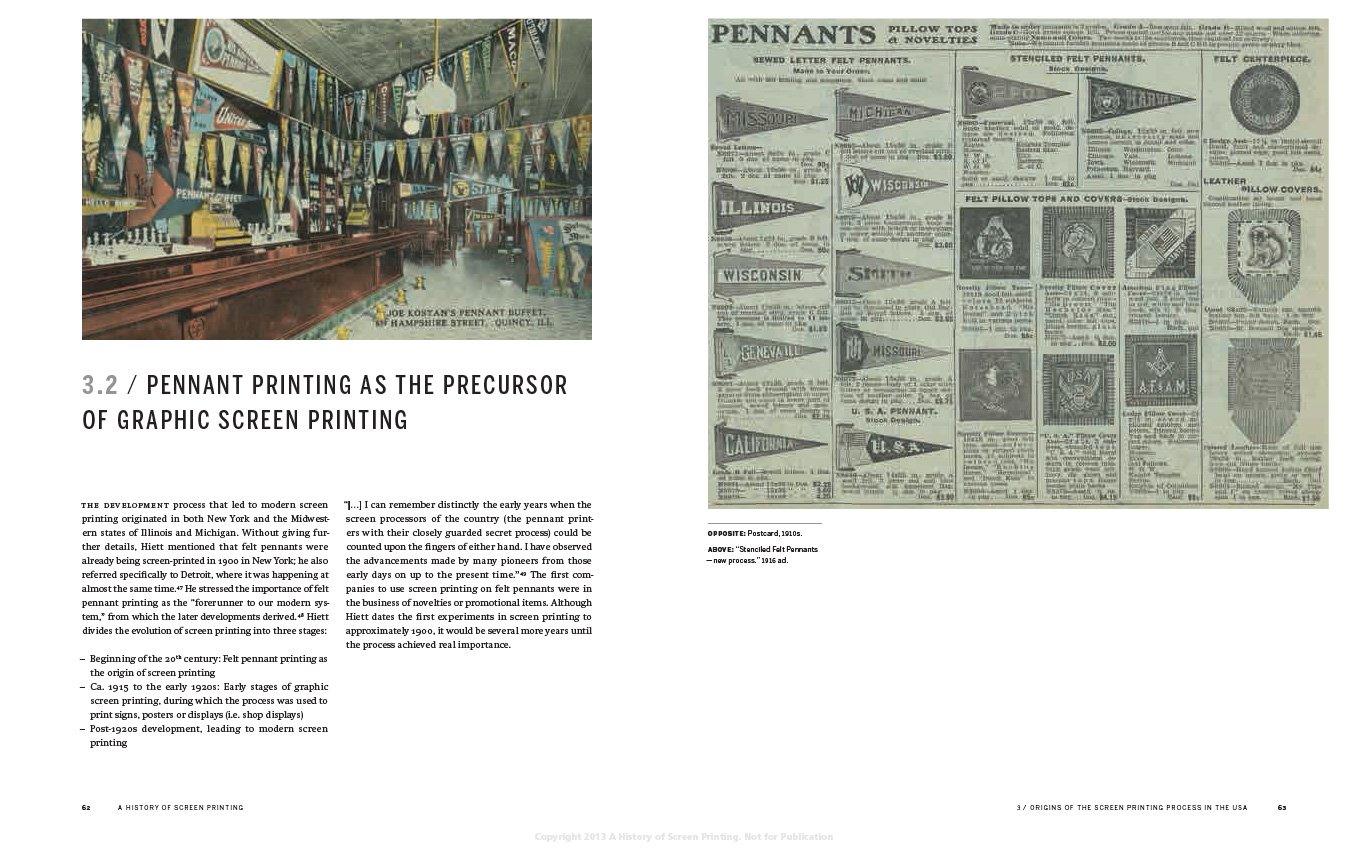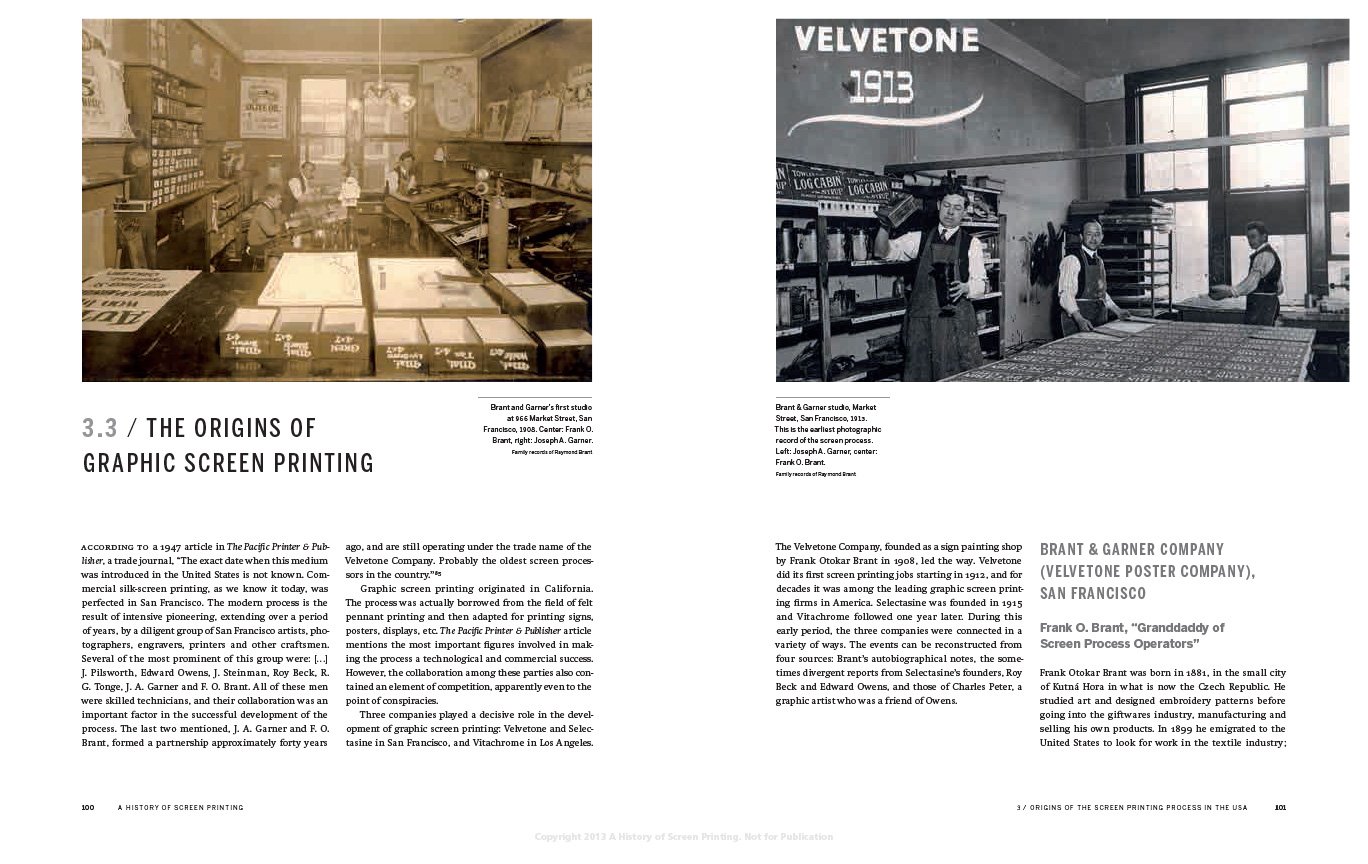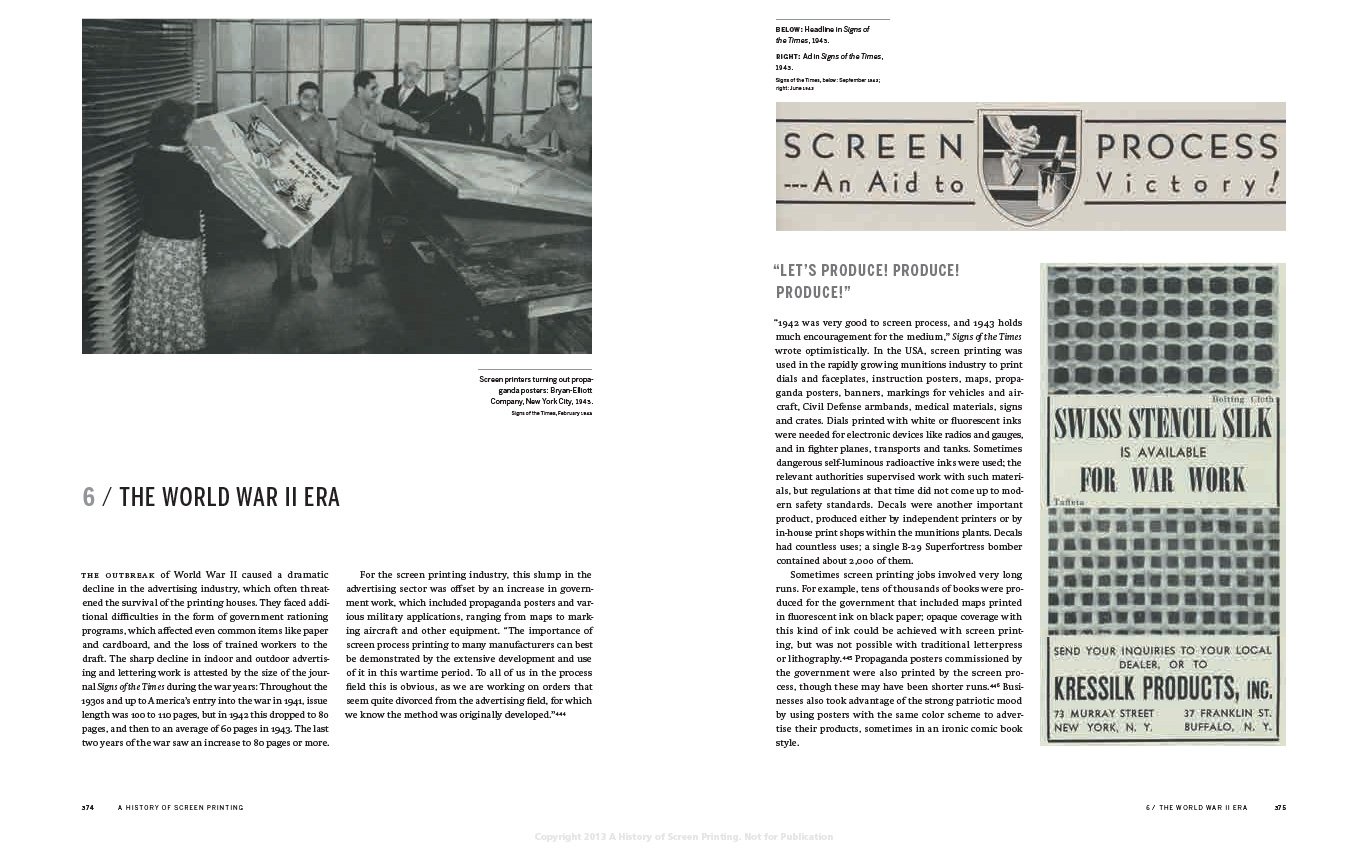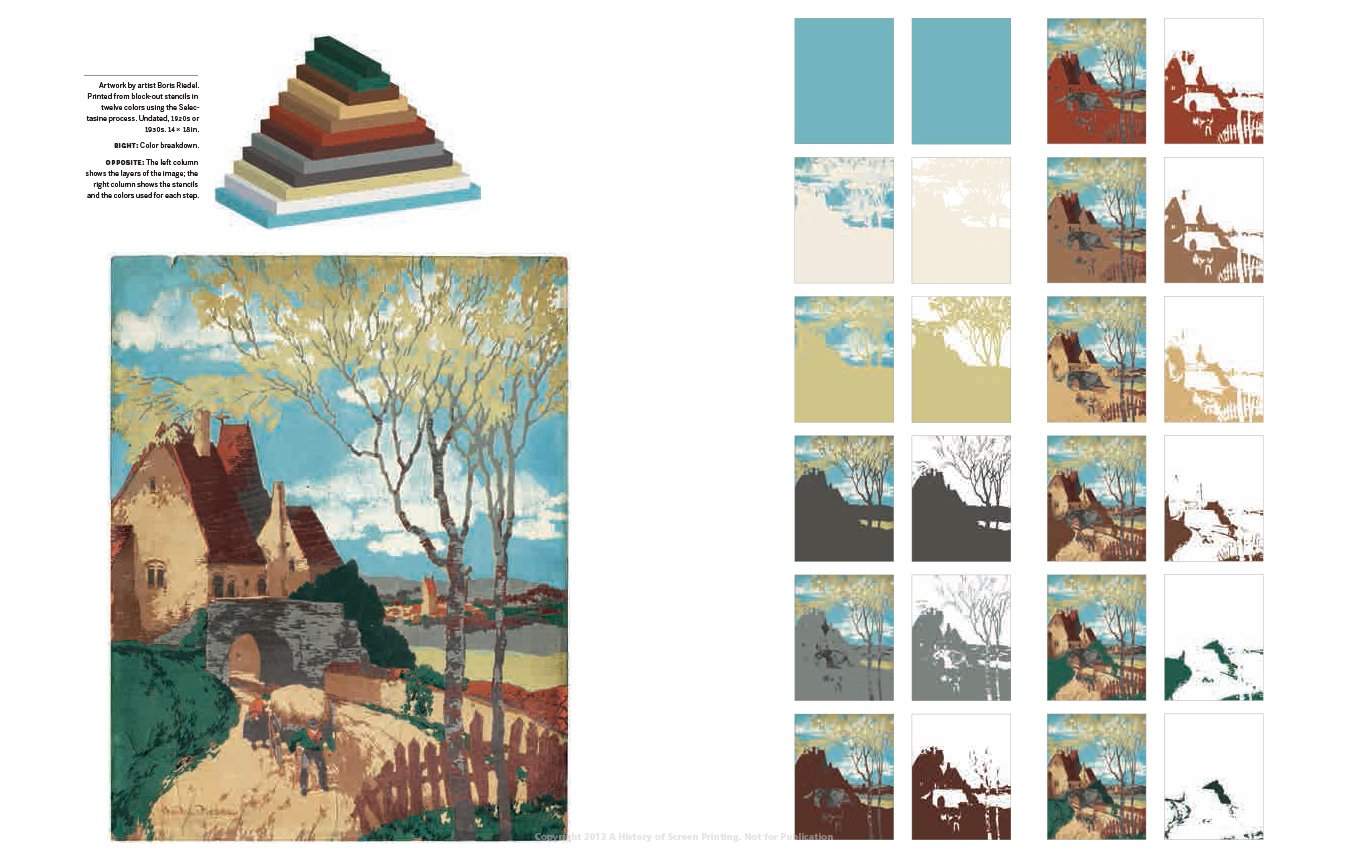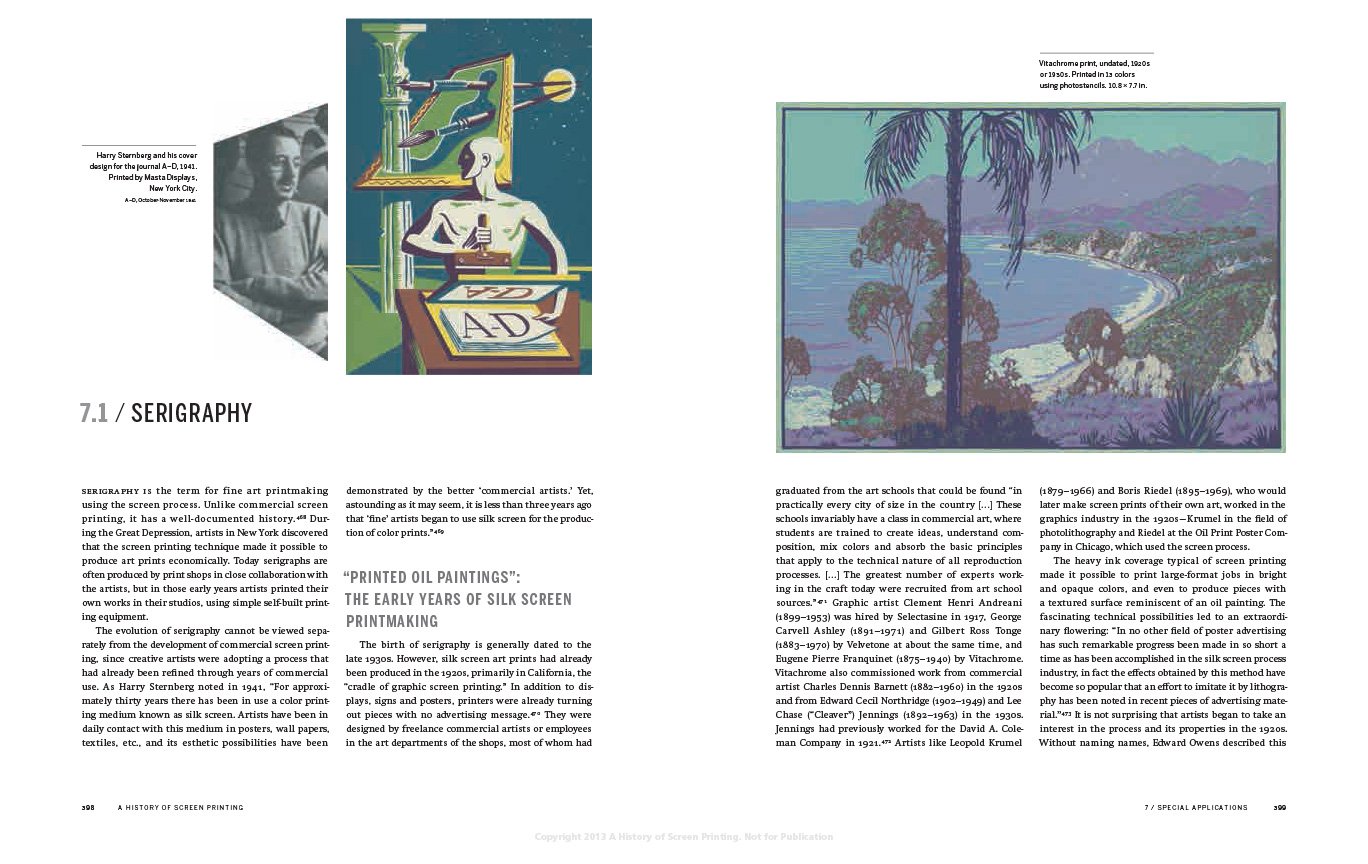Author Guido Lengwiler covers the stencil precursers leading up to the end of the 19th century, and then profiles the many American companies and individual artists, printers, sign companies, inventors and manufacturers who first started using the new process. The book follows the rapid spread around the world pre-WWII, and covers specialized areas where screenprinting flourished, creating or transforming whole manufacturing sectors - printed electronics, serigraphy, glass & ceramic decoration, textile printing.
Hard cover, 490 pages, full colour, lavishly illustrated, limited run, fully annotated, with an introduction by noted art historian Richard Field of Yale. Published in English 2013.
The book is out of print. The German edition of this sold out, and the English language version has a limited number left we are proud to have a few copies to share thanks to Andy MacDougall.
Author Guido Lengwiler covers the stencil precursers leading up to the end of the 19th century, and then profiles the many American companies and individual artists, printers, sign companies, inventors and manufacturers who first started using the new process. The book follows the rapid spread around the world pre-WWII, and covers specialized areas where screenprinting flourished, creating or transforming whole manufacturing sectors - printed electronics, serigraphy, glass & ceramic decoration, textile printing.
Hard cover, 490 pages, full colour, lavishly illustrated, limited run, fully annotated, with an introduction by noted art historian Richard Field of Yale. Published in English 2013.
The book is out of print. The German edition of this sold out, and the English language version has a limited number left we are proud to have a few copies to share thanks to Andy MacDougall.

